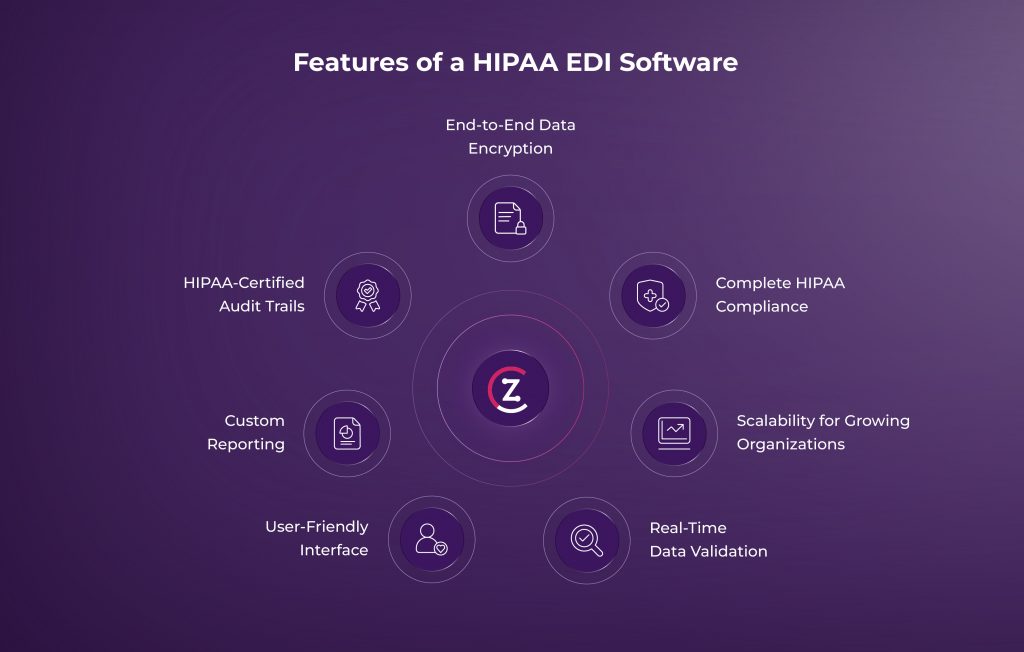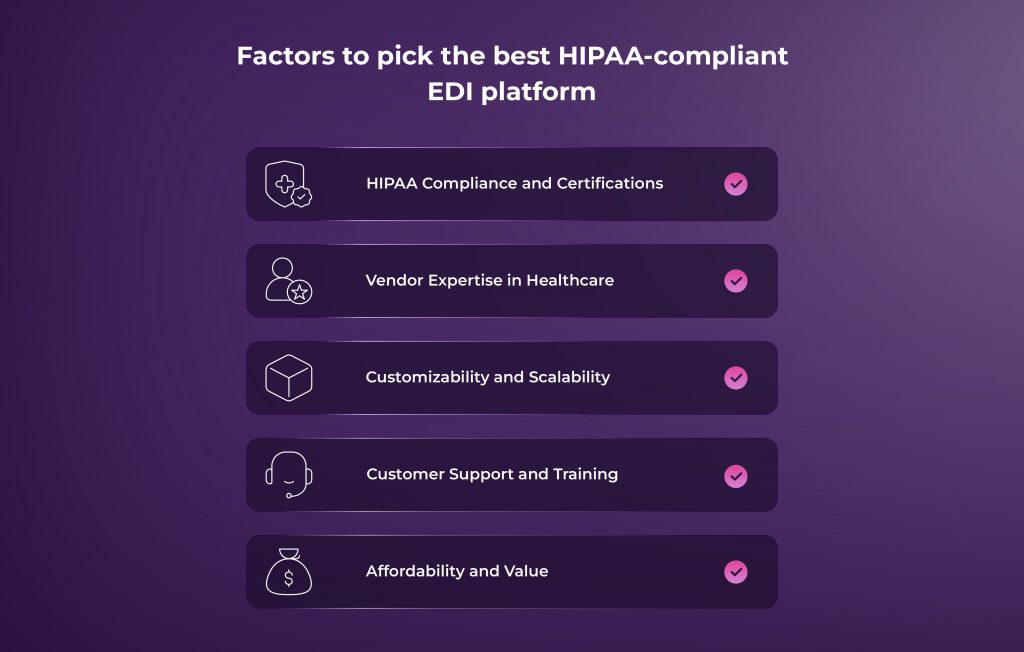The Complete Guide to HIPAA EDI Software for Healthcare Organizations


Introduction
In an era of increasing data breaches and evolving regulatory requirements, healthcare organizations face a critical challenge: safeguarding sensitive patient information while optimizing operational efficiency. HIPAA compliance is no longer optional—it is essential for ensuring the secure exchange of patient data.
Zenbridge EDI, a HIPAA-certified platform, is tailored to address these challenges. By leveraging robust compliance features and advanced automation, it empowers healthcare providers, insurers, and partners to exchange data securely and efficiently, preventing security breaches and ensuring adherence to privacy and security rules.
Top Features in HIPAA EDI Software

When choosing a HIPAA-compliant EDI platform, focus on features that enhance compliance and streamline your operations:
- End-to-End Data Encryption
Protect sensitive patient information using advanced encryption technologies that secure data during transmission and storage.
Example: Encrypting insurance claims data ensures compliance and prevents unauthorized access. - Complete HIPAA Compliance
Supports HIPAA transaction sets, including claims (837), eligibility (270/271), and payments (835), ensuring your organization meets regulatory standards.
Example: Automates compliance checks to avoid penalties and streamline audits. - Scalability for Growing Organizations
Handles high-volume transactions without compromising performance, ensuring your EDI solution grows with your organization.
Example: Large hospital networks process thousands of claims daily using scalable EDI solutions. - Real-Time Data Validation
Eliminates errors through automatic validation, reducing the risk of claim denials and data inaccuracies.
Example: Validating patient eligibility data in real-time minimizes disruptions to care delivery. - User-Friendly Interface and Reporting
Simplifies transaction management with intuitive dashboards and custom reporting tools.
Example: A centralized dashboard allows healthcare admins to track claims statuses and generate compliance reports effortlessly. - HIPAA-Certified Audit Trails
Automatically logs every transaction to maintain full visibility and accountability in data exchanges.
Example: A detailed audit trail ensures readiness for HIPAA audits and internal compliance reviews.
How to Choose the Right HIPAA-Certified EDI Platform
Here’s a checklist to evaluate potential EDI solutions:
| Feature | Zenbridge EDI | Other Vendors |
| Scalability | ✔ Built for growing healthcare networks | Limited performance? |
| User Interface | ✔ Intuitive dashboard, custom reporting | Limited Integration? |
| Real-Time Data Validation | ✔ Integrated error-checking and alerts | Reactive error handling? |
| Vendor Expertise | ✔ Specialized in healthcare and logistics | Limited Customization? |
| Support and Training | ✔ 24/7 support, robust training modules | Limited Support? |

Real-World Use Cases:
Faster Claims Processing
Scenario: Automating medical claims submissions between providers and payers.
Benefits:
- Reduces manual errors and accelerates approvals.
- Ensures compliance with HIPAA data exchange standards.
Example: Providers use the 837 transaction set to streamline claims processing, minimizing revenue cycle delays.
Efficient Medical Supply Chain Management
Scenario: Automating procurement processes for medical supplies.
Benefits:
- Prevents stockouts and overstocking.
- Enhances procurement cycles with real-time inventory updates.
Example: Suppliers use EDI 850 (Purchase Order) and 856 (Advance Ship Notice) to automate inventory restocking in hospitals.
Improved Population Health Management
Scenario: Aggregating data for public health analysis.
Benefits:
- Identifies health trends and improves care coordination.
- Enables data-driven decision-making for population health strategies.
Example: EDI 834 files (Benefit Enrollment) streamline patient data aggregation across care networks.
Simplified Revenue Cycle Management (RCM)
Scenario: Integrating EDI for invoicing and payment reconciliations.
Benefits:
- Speeds up payment processing and reduces disputes.
- Enhances financial visibility and cash flow.
Example: Hospitals use EDI 835 (Remittance Advice) to automate account receivables.
Future Scope of EDI in Healthcare
The future of EDI in healthcare is dynamic, shaped by technological advancements and evolving regulatory standards. Emerging trends include:
- Blockchain for Enhanced Security
Adds transparency and immutability to data exchanges, reducing the risk of tampering. - AI-Driven Analytics
Leverages real-time data for predictive insights, enhancing decision-making and operational efficiency. - FHIR Integration
- Bridges legacy systems with modern APIs, ensuring interoperability across healthcare systems.
Zenbridge EDI is already investing in these innovations to provide clients with a future-ready platform that meets emerging industry demands.
Conclusion
Adopting a HIPAA-compliant EDI platform like Zenbridge is a strategic investment for healthcare organizations aiming to safeguard patient data, optimize workflows, and stay compliant.
Take the Next Step
Ready to transform your healthcare operations? Schedule a free consultation with Zenbridge’s experts today to explore how our HIPAA-certified platform can meet your organization’s unique needs and drive unparalleled efficiency!